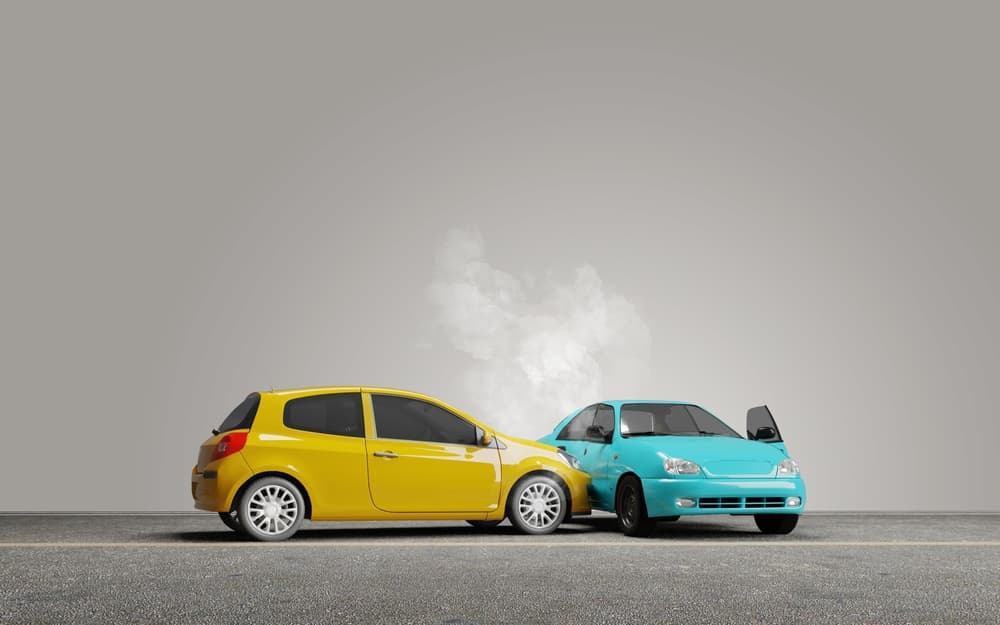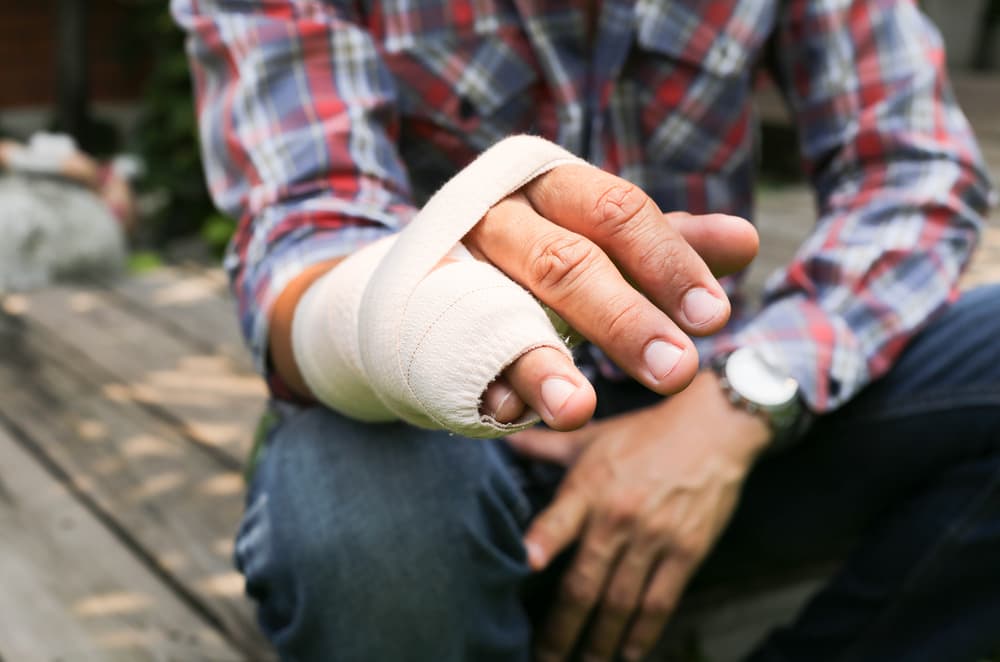T-bone accidents, also known as broadside or side-impact collisions, occur when the front of one vehicle crashes into the side of another, forming a "T" shape at the point of impact. These accidents are among the deadliest and most destructive, often resulting in serious injuries and significant vehicle damage.
One of the most contentious issues surrounding T-bone accidents is determining fault. Fault in a T-bone accident brings clarity and justice to the involved parties and significantly influences claims, compensation, and potential legal consequences. Our skilled Miami car accident attorneys can help you obtain compensation for your T-bone accident.
Understanding T-Bone Accidents
According to the National Safety Council, angle collisions, such as T-bone accidents, account for nearly 45 percent of all two-vehicle accidents and are a leading cause of motor vehicle deaths and injuries.
These accidents are extremely dangerous to the occupants of both vehicles, as they involve a frontal impact to one and a side impact—with little protection in the door panels—to the other. The risk is particularly high for occupants of a vehicle that has collided with a much larger one.
T-bone accidents most commonly occur in intersections due to one driver's failure to yield the right-of-way at a red light or stop sign. Other potential causes include chain reaction crashes in which the force of a collision between two vehicles pushes one of those vehicles into the side of an additional car. This type of crash can also occur in parking lots.
Some of the most common types of injuries that arise as a result of a side-impact crash include the following:
Seat Belt Injuries
While seat belts have prevented many deaths over the years, when an accident occurs, it is common for the vehicle's restraint system to cause numerous injuries. The National Library of Medicine explains that seat belt injuries occur due to the restraint system transmitting forces to the passenger that can cause blunt-force trauma to the neck, chest, and abdomen.
Seat belt injuries can include:
- Whiplash, which involves damage to the soft tissues of the neck.
- Fractured clavicle (collar bone).
- Fractured ribs or sternum.
- Fractured spine.
- Internal damage resulting from improper seat belt placement on the abdomen instead of the hips.
- Damage to the muscles and nerves of the back.
The treatment of these injuries depends on the severity of the damage. Internal organ injuries generally result in a hospital stay and involve surgery, while various therapies and medications can commonly treat other damage.
Broken Bones
In addition to bone fractures from seat belt injuries, individuals in a side-impact crash can also suffer broken bones. Fractures in the legs are frequent, as is damage to the knees for occupants of the vehicle that sustained a frontal impact because a T-bone collision often causes the engine to push back and intrude on the car's cabin.
Occupants of the vehicle that sustained a side impact often suffer broken arms and wrists due to the vehicle door providing little protection from the collision.
Traumatic Brain Injuries
In the chaos of a motor vehicle accident, even a seat-belted occupant risks hitting their head on an object inside the vehicle. A National Library of Medicine study notes that the most common impact point inside a vehicle is the side window glass.
While the body depends on the brain for nearly all of its voluntary and involuntary responses, the brain is not known for healing well from injury. The injured party thus faces a high risk of permanent disabilities, including memory loss, inability to speak or understand spoken language, difficulty moving in a coordinated manner, or loss of a primary sense, such as vision.
Spinal Cord Injuries
Spinal cord injuries, like traumatic brain injuries, feature a high risk of permanent disabilities due to this part of the body's healing from damage. Along with the brain, the spinal cord makes up the body's central nervous system and relays messages from the brain to the rest of the body.
Spinal cord injuries commonly result in paralysis, meaning a loss of sensation or function below the injury site. This type of injury is costly both financially and physically, particularly if the damage occurs in the neck.
Determining Fault in a T-Bone Accident
When any accident occurs between two vehicles, it is essential to determine who was at fault because the at-fault party is legally responsible for compensating others for economic and psychological harm. The most common cause of all motor vehicle accidents is negligence.
The following elements help determine fault:
- The at-fault party had a duty to take reasonable actions to avoid harming others while operating a vehicle. This duty includes properly maintaining their vehicle so that it is safe to drive and following all local and state traffic laws.
- The at-fault party breached their duty when they took actions that did not align with avoiding harm. This includes failure to yield the right-of-way, a typical cause of T-bone accidents.
- The accident occurred because the at-fault party breached their duty of care.
Factors that influence the determination of fault for a T-bone accident include:
- Traffic cameras or eyewitness accounts that reveal who had the right-of-way.
- A determination that one driver was speeding at the time of the accident, causing the driver pulling onto the roadway from a side street or private driveway to believe they had sufficient time to pass through the travel lane.
- Interviews with the involved parties about what happened, as well as skid marks and vehicle damage.
When a T-bone accident results in significant vehicle damage, injuries, or death, the police will investigate the accident to determine if someone broke the law. They will generate an accident report that often includes a narrative of their findings.
Common Scenarios in T-Bone Accidents
While there can be many reasons why the T-bone accident occurred, there are three common scenarios for accidents of this type.
Red-Light Running
All users of public roadways must yield to other travelers in certain circumstances, the most obvious being at a red light. When someone chooses to run a red light, they risk either driving into the path of another vehicle and sustaining a side impact or colliding with another vehicle and sustaining a frontal impact.
A vehicle's position in the accident is not an accurate indicator of fault, but running a red light is. The driver who failed to yield the right-of-way at the traffic light will almost always be at fault.
Failure To Yield
Red lights are not the only place where drivers must yield. T-bone accidents also commonly occur due to a driver's failure to yield at stop signs, in parking lots, and at a solid green light when turning left. This failure to yield typically results in liability. When a driver attempts to cross through an intersection while turning left on a solid green light, however, they need to determine if there is enough of a gap in traffic to do so safely.
If a driver traveling straight through the intersection is speeding, it can be difficult for the driver trying to cross to judge whether they have enough time. This can often result in liability for the driver traveling straight.
Distracted Driving
According to the National Highway Traffic Safety Administration, distracted driving results in more than 3,500 deaths a year on U.S. roadways, along with many more injuries. While texting and other cell phone use have received a lot of publicity in recent years as a major driving distraction, other activities can also cause a driver to lose focus on driving safely.
Other common driver distractions include:
- Eating, drunk-driving, or smoking.
- Talking to passengers.
- Tending to children or pets in the back seat.
- Adjusting vehicle or stereo controls.
- Looking at something or someone on the roadside or in another car.
- Daydreaming.
A distraction can cause a driver to lose focus for only seconds, which is plenty of time for a light to turn red or for a driver to miss a stop sign.
Role of Evidence in Determining Fault
When someone suffers injuries in a T-bone accident that another driver caused by their failure to yield, the victim can seek compensation for their expenses and psychological costs through a personal injury claim.
They file this claim against the at-fault driver's auto liability coverage. Geico explains that auto liability coverage pays for the property damage and injuries that victims sustained due to an at-fault driver's negligence.
Liability insurance coverage provides compensation for the following consequences:
- Repair or replacement of a damaged vehicle.
- Medical expenses.
- Lost income.
- Pain and suffering.
When an insurance company receives the claim, they will assign a claims adjuster to evaluate it. The Bureau of Labor Statistics notes that a claims adjuster is responsible for reviewing the accident details and determining whether the insurance company has to pay the claim and, if so, how much. One of the most important aspects a claims adjuster looks for when deciding to accept a claim and offer a settlement is whether their insured was at fault.
If the insurer fails to compensate the claim fairly, the claimant can file a lawsuit so that a judge or jury can consider the evidence and determine fault and compensation. Evidence is the key component in determining fault—a necessary process to ensure that those who suffered injuries and property damage due to the at-fault driver's negligence receive compensation.
One of the most significant pieces of evidence for determining fault is the accident report that the investigating officer prepared. There are, however, other types of evidence, including photographs or video of the scene, witness statements, and potential traffic tickets anyone received.
Consequences of Being At Fault
When someone is at fault for a T-bone accident, they face several consequences, such as:
- Fines and fees relating to traffic tickets, potential criminal charges, or a suspension of their driver's license.
- Increased costs for insurance coverage and the possibility that their insurance provider drops coverage following the accident.
- Financial liability for compensating victims of the accident. While liability insurance often covers these costs, if they exceed the at-fault driver's coverage or the insurer refuses to provide coverage because the driver failed to pay their premium, the driver is still liable for compensating the victims.
- No compensation for their injuries or damage to their car unless they have full coverage.
There are further consequences for drivers with a commercial driver's license or those who drive for work, as the accident will appear on their driving record.
How to Protect Your Rights After a T-Bone Accident
If you have sustained injuries in a T-bone accident, it is important to protect your right to compensation from the time of the accident until the conclusion of your personal injury case.
Avoid apologizing or discussing fault with the other driver, but answer the investigating officer's questions as thoroughly as possible. Seek prompt medical evaluation and treatment if necessary, and keep all your receipts for medical treatment and vehicle repairs.
Find the right personal injury lawyer as soon as possible. Your attorney will handle communication with all insurance providers—including yours—to help protect your claim from tactics that insurance companies use to devalue them.
Contact a Lawyer for a Free Case Evaluation

Determining who was at fault for a T-bone accident is essential to receive the compensation you need and avoid blame for the accident and the associated consequences. An experienced Miami personal injury lawyer can evaluate your claim for free and explain your legal options.

